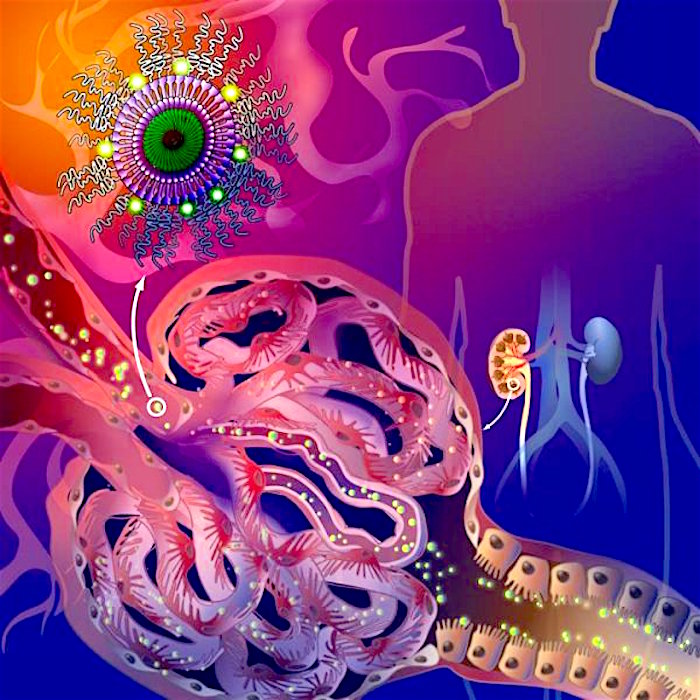 One out of three Americans will develop chronic kidney disease in their lifetime. To date, there are few solutions for advanced kidney disease beyond dialysis and kidney transplants – both of which are incredibly expensive and exert a toll on the body. Kidneys are the body’s main filtering organs, capturing small particles that don’t belong in the body, and excreting them through urine. Unfortunately, the kidneys are also highly effective at trapping and eliminating drugs that can be used to treat kidney disease.
One out of three Americans will develop chronic kidney disease in their lifetime. To date, there are few solutions for advanced kidney disease beyond dialysis and kidney transplants – both of which are incredibly expensive and exert a toll on the body. Kidneys are the body’s main filtering organs, capturing small particles that don’t belong in the body, and excreting them through urine. Unfortunately, the kidneys are also highly effective at trapping and eliminating drugs that can be used to treat kidney disease.
Researchers at the USC Viterbi School of Engineering, along with colleagues from the Keck School of Medicine at USC, have engineered peptide nanoparticles to outsmart the biological system and target the kidney cells. The innovation may prove critical to addressing chronic kidney disease.
Previously, doctors would prescribe heavy doses of medications in the hope that some of the medication would be able to reach and target the kidneys. However, this heavy dosing had adverse effects on other organs in the body.
While targeted drug delivery has long been an area of concentration for cancer research, nanoparticles for targeted drug delivery for the kidneys has largely gone unexplored, says the study’s lead author, Eun Ji Chung.
Now, after several months, the researchers have successfully created a functional kidney targeting particle. The new nanoparticle is a micelle, which is 10-20 times smaller than a traditional nanoparticle, that is synthesized from a peptide chain formulated from lysine and glutamic acids.
The extra small size of the nanoparticle allows passage into the kidneys through the initial barrier of kidney filtration, while the peptide allows the nanoparticle to stay in the kidneys and potentially unload a drug at the site of the disease without getting removed by the urine.
In this way, the researchers are taking advantage of a natural mechanism of the body to target the kidneys while minimizing systemic side effects characteristic to most kidney drugs.
After injecting mice with the fluorescent-labeled nanoparticles the researchers found that the nanoparticles were more present in the kidney than other parts of the body. These particles thus could carry drugs more selectively than previous tests by other researchers. Furthermore, these biocompatible, bio-degradable particles were able to clear out of the body in less than one week and would not damage other organs.
Source: Jonathan Wang, Christopher Poon, Deborah Chin, Sarah Milkowski, Vivian Lu, Kenneth R. Hallows, Eun Ji Chung. Design and in vivo characterization of kidney-targeting multimodal micelles for renal drug delivery. Nano Research, 2018; DOI: 10.1007/s12274-018-2100-2












[…] Source — site-health.com […]
[…] Source — healthifitnesstips.com […]
[…] Source […]